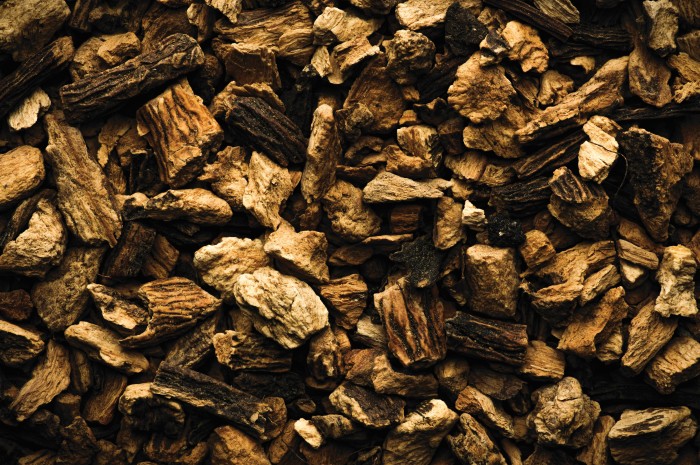
There’s a lot of mystery around the Italian speciality. Laura Foster digs down in an effort to define the category.
We all know amaro, right? We understand what makes a liquid an amaro… beyond the fact that they’re bitter drinks?
“The problem with amaro is there is so much confusion. It is not a defined category,” declares Amaro Bar’s Elon Soddu. “We as Italians, know which one is amaro only from the taste, but technically speaking, there are no regulations about calling something an amaro or not. As long as there is alcohol, there is gentian and there are herbs and spices infused in alcohol and sugar, it can be defined as an amaro.”
Alessandro Belometti, a London bartender who launched his own modern amaro called Il Diciotto 18, thinks that “the basis of amaro must be the agricultural spirit”. He continues: “We use neutral grain spirit, for example, because it manages to bring out the flavours of the botanicals without changing that. The results are cleaner, leaner flavours.
“There are five categories of amaro: strongly bitter, very bitter, aromatic, medium aromatic and very aromatic. Today, however, it is difficult to find strongly bitter and very bitter products – people’s palates are constantly developing so brands use more sugar in recipes, so they have a slightly softer flavour. The alcohol content [of amari] is usually between 16% and 40%.”
Interestingly, Belometti didn’t think that a liquid needed to include gentian to be classed as an amaro. Amari are also shaped by the region in which they’re produced, and the ingredients that are on hand locally. “In every single region they are using herbs, roots and citrus from their zones,” says Belometti.
“In the south of Italy that amaro is completely different to north Italy. North Italy is a bit more alpine, a bit more herbal, while amaro from the south of Italy is a bit more smooth, a bit more citrusy, a bit more warm in flavour.”
Soddu suspects that the relative secrecy of producers in terms of what goes into their amaro also doesn’t help matters: “Another reason why it's so difficult to define as a category is because there’s a lot of mystery swirling around. Most of the houses, they never list which herbs and spices go into the liquid. It is very, very rare that the house would put the ingredients on the side of the bottle.”
Don’t worry if you struggle to ‘get’ amari: even going at it intellectually from the perspective of a bartender, getting your head around them can be a rather Sisyphean task. At the start of last decade, Michael Sager was working in a bar in San Francisco that specialised in amari. “I was tasked with having as many different amari as possible, we had about 150, we had them in different flights and I designed a flavour map,” he recalls. “I found them so hard to categorise, and that’s with me dealing with it in-depth. It’s so hard to figure out.”
What’s out there?
There are over 1,000 amaros produced in Italy, but “probably 95% of those are not known by anyone, because the production is so limited that they produce only for the village”, says Soddu.
Consequently the UK only sees a relative handful arrive at these shores, but among them are some well-known brands – at least among bartenders – including Cynar, Fernet-Branca, Ramazzotti and Averna. I took a look at a very small selection of some others…
Braulio (21% abv), produced in the Italian alps and owned by Gruppo Campari, is classified as an alpine amaro. A dusty gentian, juniper and bitter orange nose lead on to a viscous palate with an initial sweet orange flavour that quickly morphs into a bitter liquid full of gentian, wormwood, pine, burnt caramel and cooling menthol.
Hailing from Bologna, Amaro Montenegro (23% abv), has a more woody, musky, perfumed nose. Candied orange peel, vanilla, wormwood and liquorice are all present on the palate, before cooling eucalyptus wafts in on the finish.
Imported by Marussia Beverages, Bepi Tosolini’s (30% abv) accessible amaro walks a line between fruity and herbal, with notes of lemon, grapefruit and rhubarb combined with sweet liquorice, rose, gentian and sappy juniper.
Belometti’s brand Il Diciotto 18 (28%) is made in the UK and is a modern take on amaro. It has a much lighter, more refined nose, with notes of anise and fennel seed, liquorice, gentian and chamomile all present. Tasting reveals a juicy yet refined palate, with bitterness well balanced with sweetness. Orange and rhubarb provide the backbone for the rest of the herbs and spices. This is a wonderful new addition to the amaro category.
How to use it
When drinking amari neat, “the best way to be drunk is cold”, says Soddu. “After our meal we almost always have an Amaro, almost every family [in Italy] have a bottle of amaro in the fridge that they take out sometimes after the meal. Something we do in Italy, we drink the espresso with the amaro on the side.”
Amari can be used in cocktails, however. Soddu points out that due to their strength in flavour, their best use is as modifiers, or in stirred-down drinks, usually with whisky.
Sager, on the other hand, thinks amari work really well “in a Highball, with different types of Italian artisanal sodas”.
He continues: “You can do any kind of cocktail and add amaro and it will be better with it. Half of the cocktails on our menu now include amaro. We don’t often list the amaro in the cocktails that they’re in, we just include them to boost the flavour of the drink.”


